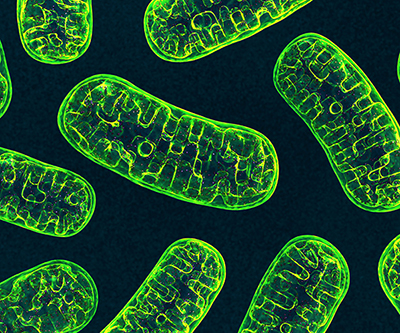
Mitochondria
Credit: Stock image
Mitochondria are the intracellular organelles that power the cell. Ions, metabolites, and proteins can enter and exit the mitochondria through channels that span the mitochondrial outer membrane. Identifying the molecular mechanisms of interaction between these channels and their multiple cytosolic partners, as well as the channels’ biophysical functions, are important for understanding human health and the development of various diseases.
For example, a neuronal protein called alpha-synuclein (αSyn) can enter mitochondria. When it accumulates abnormally in neurons, αSyn can disrupt energy production and contribute to the development of neurodegenerative diseases, such as Parkinson’s. αSyn primarily crosses the mitochondrial outer membrane through a channel called the voltage-dependent anion channel (VDAC).
Researchers from the Bezrukov Lab, in collaboration with the National Institute of Standards and Technology, explored a process called voltage-activated complexation, which helps regulate ion and metabolite fluxes across the mitochondrial membrane. They specifically looked at how αSyn interacts with mitochondrial VDAC in comparison with two non-mitochondrial channel proteins called MspA and α-hemolysin.
These three channels differ widely in their origin, structure, geometry, charge density distribution, and response to voltage. However, despite these significant structural and functional differences, the team found that voltage-activated complexation of αSyn occurred with all three channels. The findings indicate that the basic role of the channel is to confine the electric field, regardless of the channel’s geometry and makeup. These and other conclusions from the paper inform scientists on how these complexes form and function in the lipid membrane.
As a result of these findings, researchers now have a more accurate understanding of voltage-activated protein-protein complexation at the membrane surface, which can be applied to many new avenues of research.
Learn more about the Physical Biology and Medicine Group: https://www.nichd.nih.gov/about/org/dir/affinity-groups/PBM.
 BACK TO TOP
BACK TO TOP